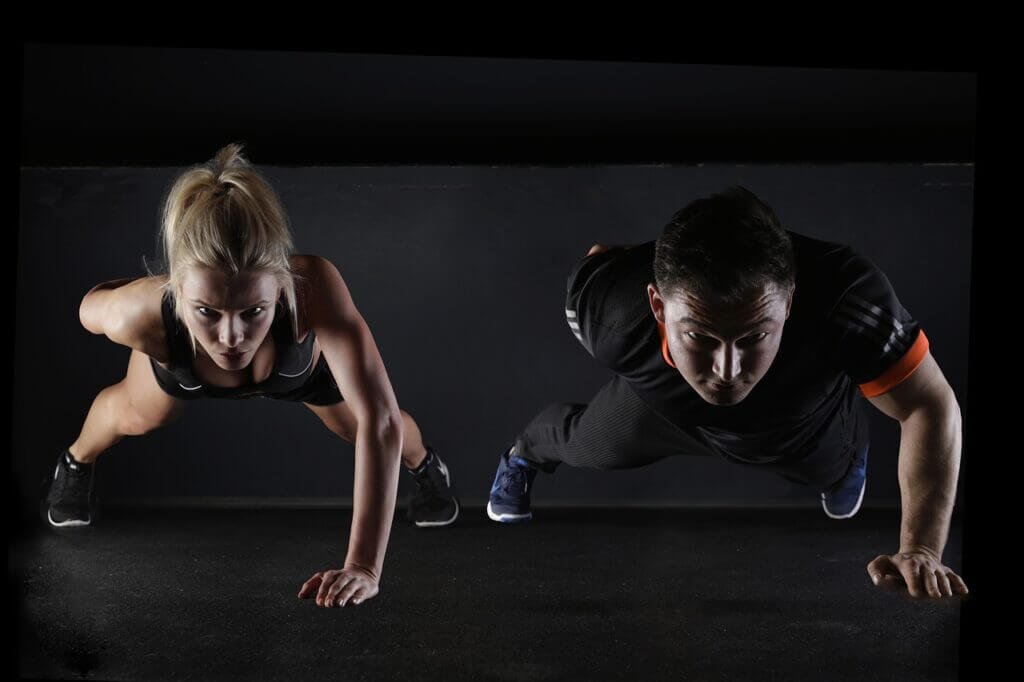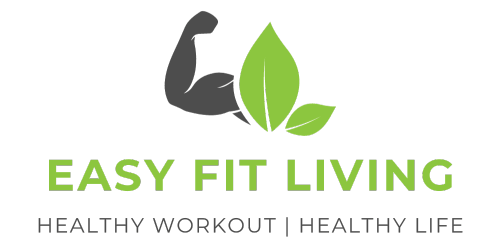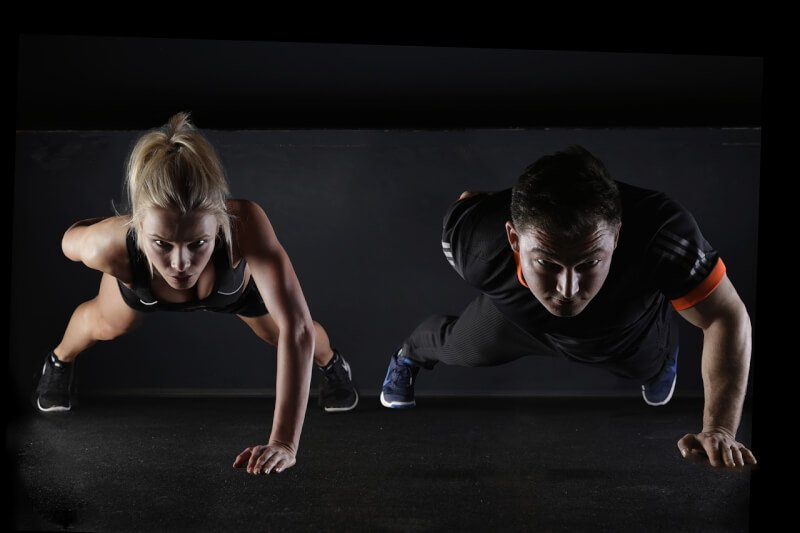Are you new to the world of exercise and in need of guidance on establishing a healthy workout routine? Look no further! In this article, we will explore the essential components of a workout regimen tailored specifically for beginners. Whether you’re aiming to improve your overall fitness, lose weight, or simply adopt a more active lifestyle, we’ve got you covered. So, grab your workout gear and get ready to embark on an exciting journey towards a healthier and happier you! A healthy workout routine for beginners is essential for anyone looking to improve their fitness and overall well-being. Whether you’re just starting out on your fitness journey or getting back into a routine after a break, establishing a structured and balanced workout plan can help you achieve your goals while avoiding injury. In this comprehensive guide, we will explore the various components of a healthy workout routine and provide valuable tips and insights to help you get started on the right foot.

Warm-up
Importance of warm-up
Before diving into any physical activity, it is crucial to warm up your body properly. A warm-up routine helps prepare your muscles, joints, and cardiovascular system for the upcoming workout. It increases blood flow, elevates heart rate gradually, and boosts your body temperature. By doing so, you reduce the risk of injury and improve overall performance during your exercise session.
Types of warm-up exercises
There are various types of warm-up exercises that you can include in your routine. Dynamic stretching, such as arm circles, leg swings, and hip rotations, helps increase flexibility and range of motion. Cardiovascular warm-up exercises, such as jumping jacks, jogging in place, or cycling, elevate your heart rate gradually and warm up the major muscle groups. It’s essential to choose warm-up exercises that align with the type of workout you will be doing.
Cardiovascular Exercise
Benefits of cardiovascular exercise
Cardiovascular exercise, often referred to as cardio, is any activity that increases your heart rate and breathing rate. Engaging in regular cardio exercise offers numerous benefits, such as improving heart health, increasing stamina and endurance, burning calories for weight loss, and reducing the risk of chronic diseases like heart disease and diabetes.
Types of cardiovascular exercises
There are countless ways to get your heart pumping with cardiovascular exercises. Walking, jogging, running, cycling, swimming, dancing, and jumping rope are just a few examples. Choose activities that you enjoy and that align with your fitness level. Remember to start slowly and gradually increase the intensity and duration over time for the best results.

Strength Training
Benefits of strength training
Strength training involves resistance-based exercises that target the muscles, bones, and connective tissues of your body. Incorporating strength training into your workout routine provides numerous benefits, including increased muscle strength and tone, improved bone density, enhanced metabolism and calorie burning, better posture, and improved joint stability and flexibility.
Types of strength training exercises
Strength training exercises can be done using various equipment, including free weights, resistance bands, machines, or just your body weight. Common exercises include squats, lunges, push-ups, bench presses, bicep curls, and deadlifts. It’s important to start with light weights or resistance and focus on proper form before gradually increasing the intensity.
Flexibility Training
Benefits of flexibility training
Flexibility training is often overlooked but plays a critical role in overall fitness. It involves stretching exercises that help improve the range of motion in your joints, reduce muscle tension, and enhance muscle elasticity. Incorporating flexibility training into your routine can improve athletic performance, prevent injuries, and enhance posture and balance.
Types of flexibility exercises
Flexibility exercises can include static stretching, where you hold a stretch for a certain period, or dynamic stretching, which involves moving through a range of motion. Yoga, Pilates, and various stretching exercises targeting specific muscle groups are all great options for improving flexibility. Remember to warm up and never push yourself beyond your limits when stretching.

Rest and Recovery
Importance of rest and recovery
Rest and recovery days are just as crucial as the actual workout days. By allowing your body time to recover, you prevent overtraining and reduce the risk of injuries and burnout. Rest days also give your muscles a chance to repair and rebuild, leading to better overall fitness gains.
How to incorporate rest days
Incorporating rest and recovery into your workout routine is essential. Aim for at least one to two rest days per week, where you engage in lighter activities or completely avoid exercise. It’s also important to listen to your body and adjust your workout intensity or take an extra rest day if you’re feeling excessively fatigued or experiencing muscle soreness.
Nutrition
Importance of proper nutrition
A healthy workout routine goes hand in hand with proper nutrition. Fueling your body with the right nutrients ensures optimal performance, aids in muscle recovery, and helps achieve your fitness goals. By consuming a well-balanced diet, you provide your body with the necessary energy, vitamins, and minerals to support your workouts and overall well-being.
Pre-workout and post-workout meals
Pre- and post-workout meals are essential to fuel your body before exercise and aid in recovery afterward. Before a workout, opt for a balance of carbohydrates and protein to provide energy and support muscle growth. Examples include a banana with peanut butter or a protein smoothie. Post-workout, focus on replenishing glycogen stores with carbohydrates and repairing muscles with protein. A balanced meal with lean proteins, whole grains, and vegetables is ideal.
Hydration
Importance of staying hydrated during workouts
Staying properly hydrated throughout your workouts is crucial for performance, recovery, and overall health. Water is essential for regulating body temperature, transporting nutrients, lubricating joints, and flushing out toxins. Dehydration can lead to muscle cramps, fatigue, decreased exercise performance, and even more severe health issues.
Tips for staying properly hydrated
To stay properly hydrated during your workouts, make sure to drink water before, during, and after exercise. It’s recommended to drink at least 8 ounces of water 30 minutes before a workout and continue hydrating with small sips throughout the session. If engaging in prolonged or intense exercise, consider replenishing electrolytes with sports drinks or adding electrolyte-rich foods to your diet.
Setting Realistic Goals
The importance of setting achievable goals
Setting realistic and achievable goals is vital for maintaining motivation and staying committed to your fitness journey. By setting specific, measurable, attainable, relevant, and time-bound (SMART) goals, you provide yourself with a clear roadmap to success. It’s important to remember that progress takes time and that focusing on personal improvement rather than comparing yourself to others is key.
Creating a workout plan based on your goals
Once you have established your fitness goals, creating a well-rounded workout plan becomes essential. Consider incorporating a combination of cardiovascular exercises, strength training, and flexibility exercises to target various aspects of your fitness. It’s also crucial to align your workout plan with your time availability and preferences to ensure sustainability.
Monitoring Progress
Methods for tracking progress
Tracking your progress is an effective way to celebrate achievements, stay motivated, and make adjustments to your workout routine. You can use various methods to monitor progress, such as keeping a workout journal, taking measurements, tracking weight or body composition changes, and using fitness apps or wearable devices. Regularly assessing your progress allows you to identify what works and make necessary adjustments along the way.
Adjusting your workout routine based on progress
As you make progress in your fitness journey, it’s important to adjust your workout routine accordingly. Gradually increase the intensity, duration, or weight of your exercises to continue challenging your body. It’s also beneficial to introduce different exercises or training techniques to prevent plateaus and keep your workouts exciting and effective.
Safety and Injury Prevention
Tips for exercising safely
Exercising safely is essential to prevent injuries and ensure long-term health. Always start with a proper warm-up and cool-down, use proper form and technique during exercises, and listen to your body’s signals. It’s important to incorporate rest days into your routine and to avoid overexertion. If you’re unsure about proper form or technique, consider consulting a qualified fitness professional.
Common workout injuries and prevention measures
Certain injuries are prevalent in the world of exercise, but many can be prevented with precautions. Strains and sprains can be minimized by gradually increasing intensity and flexibility and using proper form. Overuse injuries, such as tendinitis or stress fractures, can be prevented by following rest and recovery guidelines and incorporating variety into your workouts. If you experience pain or discomfort, don’t hesitate to seek professional medical advice.
In conclusion, a healthy workout routine for beginners encompasses a well-rounded approach that includes warm-up exercises, cardiovascular exercise, strength training, flexibility training, rest and recovery days, proper nutrition, hydration, goal setting, progress monitoring, and prioritizing safety and injury prevention. By following these guidelines, you will be well on your way to achieving your fitness goals and enjoying a healthier and more fulfilling lifestyle. Remember to listen to your body, have fun, and celebrate every milestone along the way. Good luck on your fitness journey!


